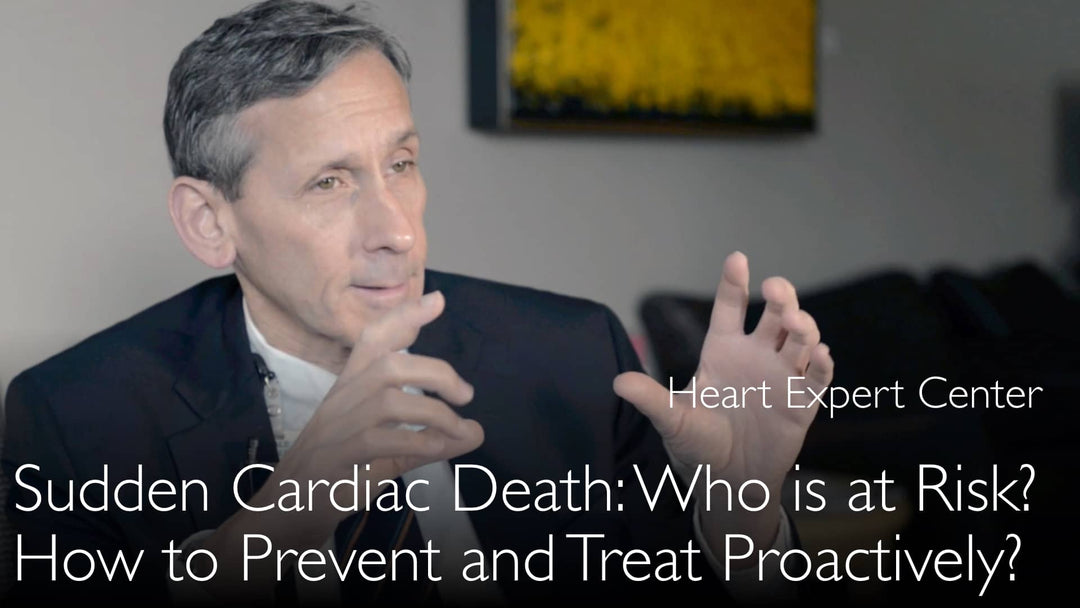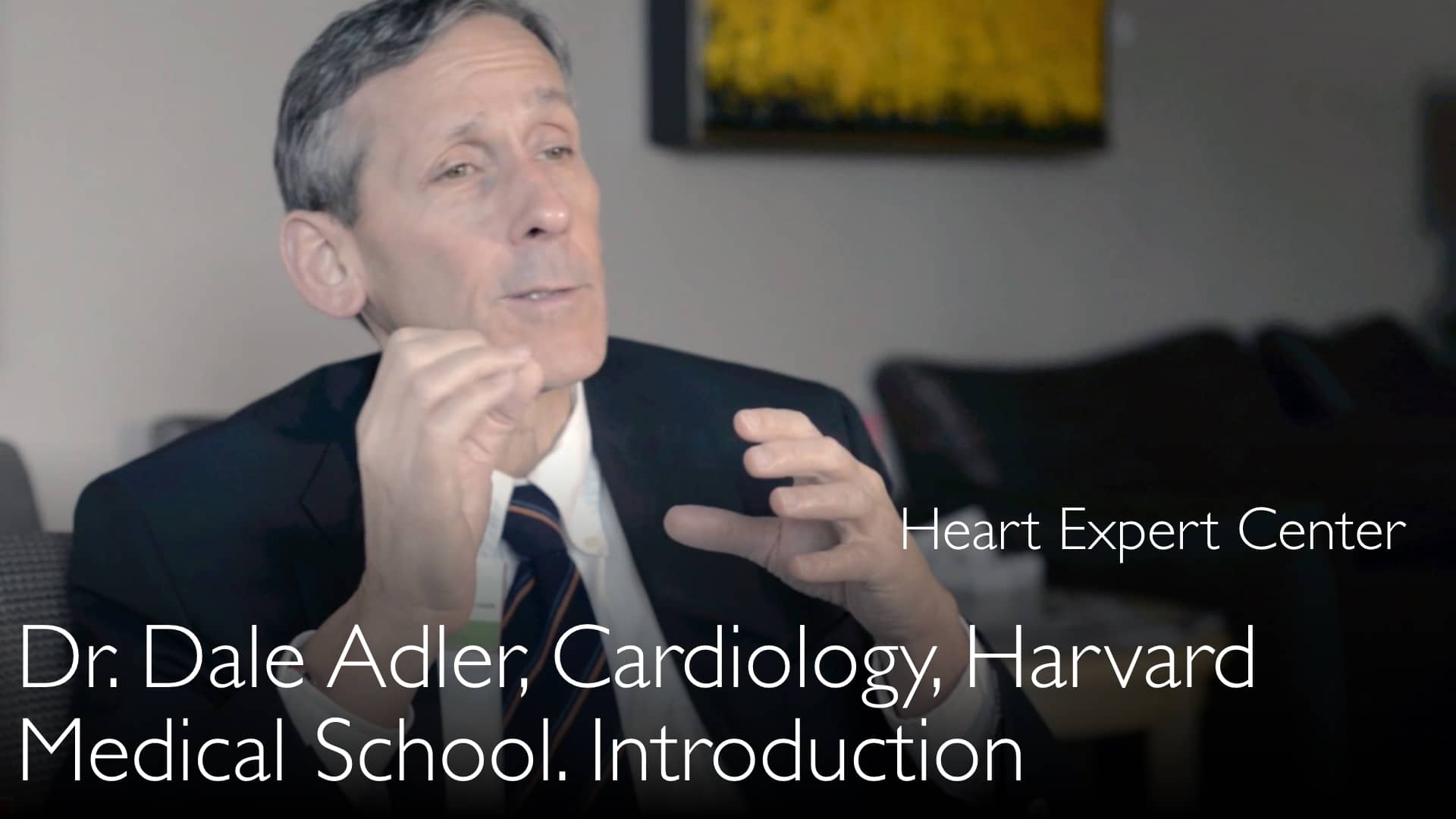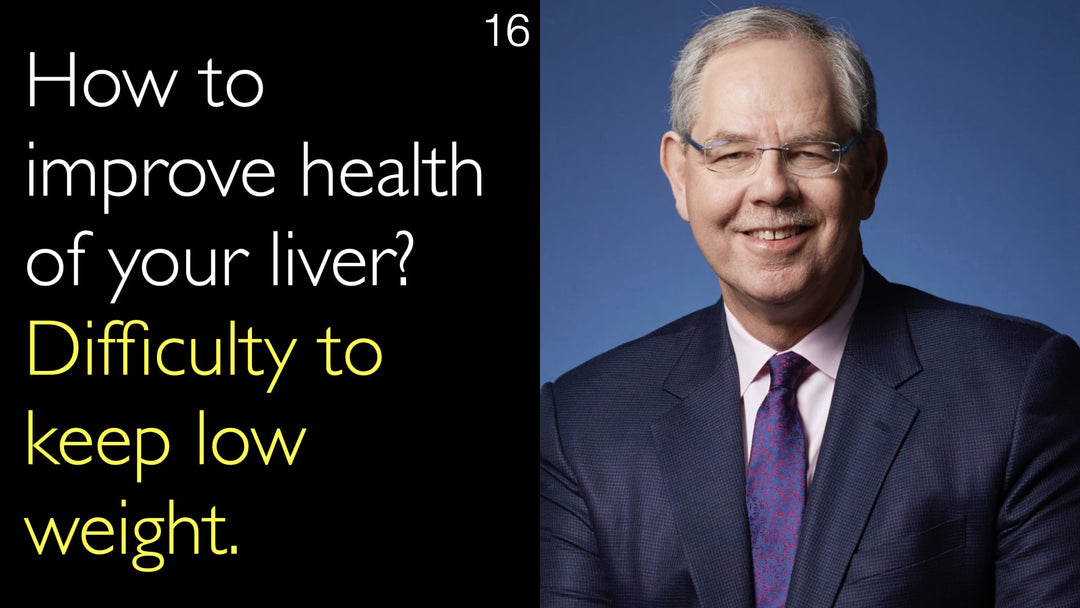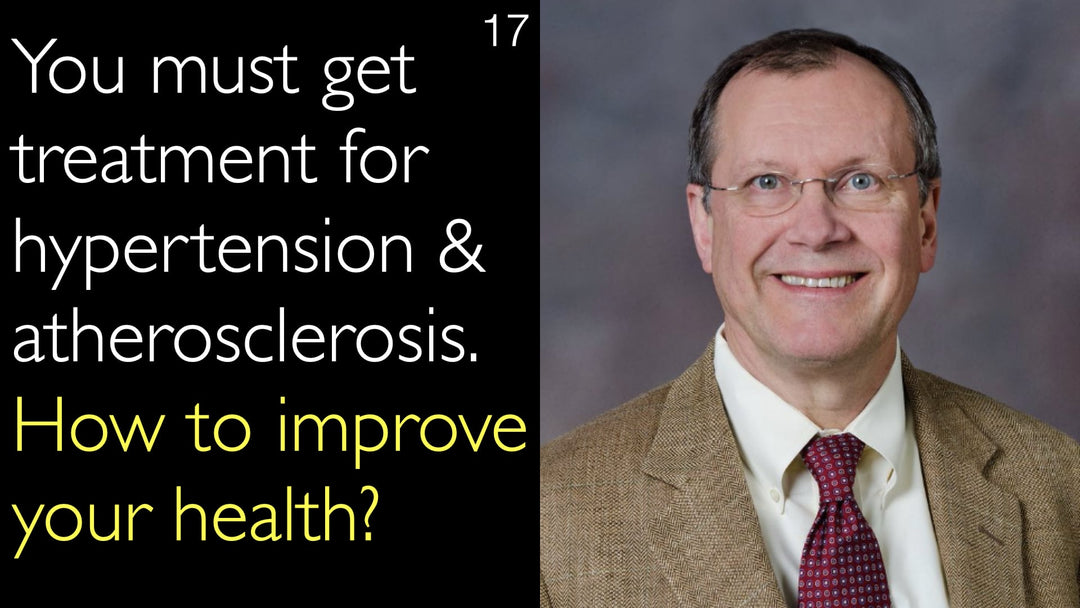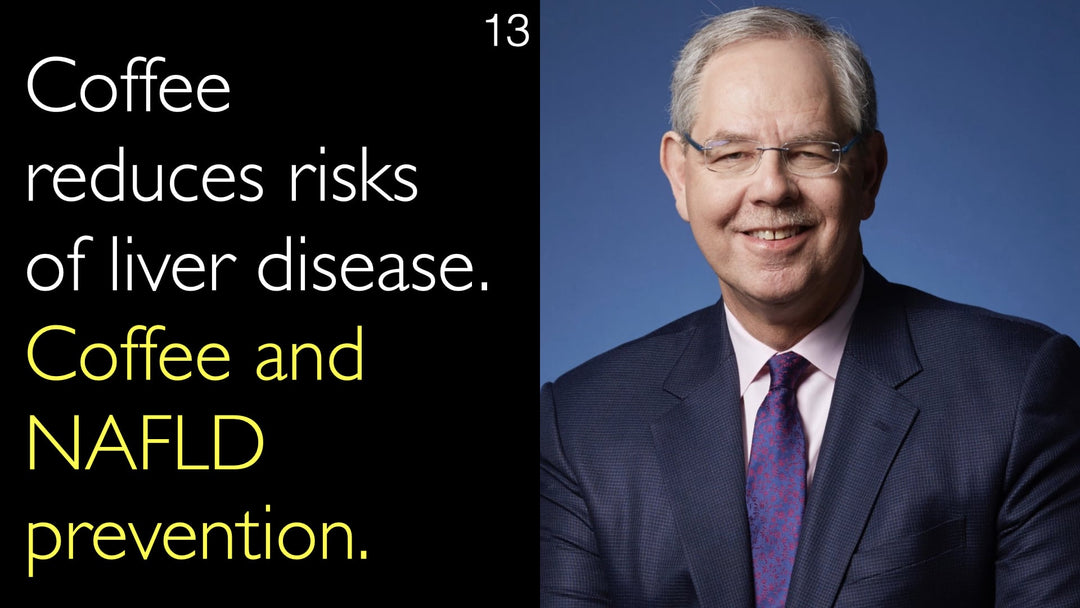מומחה קרדיולוגיה מוביל ד"ר דייל אדלר, MD, דן במניעת מוות לבבי פתאומי, ומדגיש את החשיבות בזיהוי גורמי סיכון כגון קרדיומיופתיה היפרטרופית ותסמונת QT ארוך. הוא מדגיש את תפקיד הסקירה הגנטית ואת השימוש באק"ג (אלקטרוקרדיוגרם) ובאקוקרדיוגרפיה בגילוי סיכונים פוטנציאליים. ד"ר אדלר מתייחס גם לאתגרים במוות לבבי פתאומי בספורטאים צעירים ולחידושים בדפיברילטורים קרדיאליים למניעה. הוא מדגיש את החשיבות של בדיקה קלינית יסודית ואת היתרונות הפוטנציאליים של התערבות מוקדמת למניעת תוצאות טרגיות.
מניעת מוות לבבי פתאומי: גורמי סיכון ובדיקות סקר
קפיצה לפרק
- זיהוי גורמי סיכון למוות לבבי פתאומי
- תפקיד הבדיקה הגנטית במניעה
- אק"ג ואקוקרדיוגרפיה בזיהוי סיכון
- מוות לבבי פתאומי בספורטאים צעירים
- חידושים בדפיברילטורים מונעים
- תמליל מלא
זיהוי גורמי סיכון למוות לבבי פתאומי
ד"ר דייל אדלר, MD, מדגיש את החשיבות בזיהוי גורמי סיכון למוות לבבי פתאומי, שיכולים לעיתים להיות שקטים במשך עשורים. גורמי סיכון מרכזיים כוללים קרדיומיופתיה היפרטרופית, תסמונת QT ארוך ומחלת לב איסכמית. הבנת גורמים אלו מאפשרת אסטרטגיות מניעה ממוקדות, שעשויות להציל חיים.
תפקיד הבדיקה הגנטית במניעה
בדיקה גנטית ממלאת תפקיד קריטי במניעת מוות לבבי פתאומי. ד"ר אדלר מדגיש כיצד התקדמות בהבנת מומים גנטיים, כמו אלו הקשורים לתסמונת QT ארוך, מאפשרת הערכת סיכונים פוטנציאליים בקרב בני משפחה. גישה פרואקטיבית זו מאפשרת התערבות מוקדמת וטיפול.
אק"ג ואקוקרדיוגרפיה בזיהוי סיכון
אלקטרוקרדיוגרמה (אק"ג) ואקוקרדיוגרפיה הם כלים חיוניים בזיהוי מצבים תת-קליניים שעלולים להוביל למוות לבבי פתאומי. ד"ר אדלר מציין כי בדיקות אלו יכולות לזהות מצבים כמו קרדיומיופתיה היפרטרופית, ומספקות מסלול לאבחון וטיפול מוקדם, ובכך מפחיתות את הסיכון לאירועים לבביים פתאומיים.
מוות לבבי פתאומי בספורטאים צעירים
מוות לבבי פתאומי בספורטאים צעירים הוא דאגה משמעותית, כפי שמודגש על ידי ד"ר אדלר. הוא דן בחשיבות בדיקת סקר למומים מבניים בלב אצל ספורטאים, כמו קרדיומיופתיה היפרטרופית, כדי למנוע אירועים טרגיים. בדיקה קלינית מפורטת ואק"ג מומלצות לכל המשתתפים בספורט.
חידושים בדפיברילטורים מונעים
ד"ר אדלר דן בחידושים בדפיברילטורים מונעים, שכעת קטנים יותר ופוטנציאלית אלחוטיים. מכשירים אלו קריטיים בטיפול בחולים בסיכון למוות לבבי פתאומי, ומציעים אפשרות פחות פולשנית עם פחות סיבוכים, ובכך משפרים תוצאות מטופלים ואיכות חיים.
תמליל מלא
ד"ר אנטון טיטוב, MD: כיצד למנוע מוות לבבי פתאומי? גורמי סיכון למוות לבבי פתאומי קיימים בשקט במשך עשורים. כיצד לבדוק ספורטאים צעירים לסיכון למוות פתאומי? שיעור ההישרדות ממוות לבבי פתאומי נמוך.
ד"ר אנטון טיטוב, MD: הפחתת סיכונים למוות לבבי פתאומי. מוות לבבי פתאומי מתרחש בספורטאים. כיצד ניתן למנוע מוות עקב דום לב פתאומי? מניעת דום לב פתאומי מתמקדת בזיהוי גורמי סיכון: קרדיומיופתיה היפרטרופית, קרדיומיופתיה של החדר הימני אריתמוגנית, ומחלת לב איסכמית. תסמונת QT ארוך וקרדיומיופתיה היפרטרופית תת-קלינית הם גורמי סיכון מרכזיים למוות לבבי פתאומי.
חוות דעת שנייה מבטיחה שאבחון קרדיומיופתיה היפרטרופית נכון ומלא. חוות דעת שנייה גם עוזרת לבחור אסטרטגיית הטיפול הטובה ביותר להפרעת קצב לב. פנה לחוות דעת שנייה על קרדיומיופתיה איסכמית ולא-איסכמית והיה בטוח שהטיפול שלך הוא הטוב ביותר. אורח חיים בריא מפחית סיכון למוות לבבי פתאומי, אך בדיקה גנטית חשובה.
חיזוי ומניעה של מוות לבבי פתאומי כוללים בדיקת אק"ג ואקוקרדיוגרפיה. אק"ג יכול לאתר קרדיומיופתיה היפרטרופית תת-קלינית. מניעת מוות לבבי פתאומי היא אתגר מרכזי לקרדיולוגים ולמטופלים.
ד"ר דייל אדלר, MD: אתה צודק לחלוטין. מוות לבבי פתאומי הוא ללא ספק מאורע מעורר אימה. בתחום אחד קטן, יש מומים גנטיים. יש הפרעות בקצב הלב. יש תסמונות QT ארוך, שבהן אם יש היסטוריה משפחתית של הפרעת קצב לב או מוות פתאומי כתוצאה מכך. היום אנחנו מבינים טוב יותר את הגנים הקשורים למוות לבבי פתאומי. אנחנו יכולים להעריך בני משפחה אחרים. אנחנו יכולים לראות אם יש להם גנים אלו. ואם כן, אנחנו יכולים לטפל בהם בצורה הנכונה.
תסמונות QT ארוך מזוהות באלקטרוקרדיוגרמה [אק"ג]. ניתן לזהות תסמונת QT ארוך באק"ג. יש很多 אזורים אפורים באק"ג. אבל שם האק"ג מועיל. אם действительно יש היסטוריה משפחתית של מוות פתאומי, אז מוסיפים לזה מידע גנטי. עושים אבחון נכון של סיכוני מוות פתאומי. Then you find the best treatment to prevent sudden death.
יש many more issues in terms of sudden death in patients with structural heart disease. Some of the structural heart disease could also be genetic. There is the hypertrophic cardiomyopathy group. There is the Arrhythmogenic Right Ventricular Dysplasia (ARVD) group. And those also can have a genetic component. Sometimes there is a family history of sudden cardiac death. Then patients can be screened for sudden death genetic risks. Their genes can be assessed. You know how to follow them.
But there is a much larger group of patients with sudden death. They are the patients who have some problem with the overall pumping capacity of their heart. But they do not have a problem with blood flow to the heart. We would call this problem a nonischemic cardiomyopathy. Many times there may be a genetic component to such patients. And then the big share of patients with sudden cardiac death is this. We worry about them very much. It is the ischemic cardiomyopathy.
These patients are not getting enough blood flow. Sometimes patients are brought into a hospital following a cardiac arrest. They are taken to the catheterization laboratory. At least half of the time, we will find that they have an occlusion of a blood vessel of the heart. To prevent sudden death, it is important to take care of the heart blood vessels. It is a big deal, of course. Identification of families that are at risk for sudden cardiac death is a big deal. And also identification of patients who have problems with the overall pumping capacity of the heart is a big deal.
Despite all that, we know sudden death is an enormous issue. Because once patients get to the hospital with a heart attack, we can help them well. There is a group of sudden cardiac death patients that never gets to the hospital. This group of patients troubles us very much. The other piece to the sudden death equation is this.
ד"ר אנטון טיטוב, MD: When you identified risk factors, what to do about them? Sudden cardiac death risk factors could be a genetic basis, or dilatation of the heart, or problems with coronary arteries, or the scar on the heart. Then treatment of underlying cause is important. It is the use of preventive defibrillators. And that has been an area with tremendous progress.
So the devices that we use nowadays are much smaller than in the past. I think all of us are very encouraged by the development of a device that is actually going to be wireless. Preventive cardiac defibrillator will be implanted underneath the skin. You don't actually have to have wires in the bloodstream. And that kind of device we would hope could last for a long period of time. We hope wireless cardiac defibrillator will not create the complications of the wires going across valves and into the heart. We hope there will not be risk of infection.
Some sudden cardiac death events happen in young athletes. And not necessarily professional athletes, but somebody who might be playing soccer in school. Young athletes that play other sports. In Italy, all athletes are screened for structural abnormalities of the heart. All athletes are screened for hypertrophic cardiomyopathy.
ד"ר דייל אדלר, MD: What are the best ways to screen for hypertrophic cardiomyopathy? Does it make sense? Because risk of sudden cardiac death makes a lot of parents very worried. Because sudden death events happen. Even though overall in population of many people sudden cardiac death events are rare. But any one sudden cardiac death is one death too many.
You are absolutely correct. And of course sudden death events in young athletes receive a tremendous amount of media attention. And it is a tragedy like all sudden deaths. All deaths that you think might have been able to be prevented. And you are just correct. Hypertrophic cardiomyopathy ranks up high in sudden cardiac death events in young athletes.
There are some other genetic syndromes. They would be much more rare. Everybody in this country is very aware of the Italian experience. We would say that without question a careful clinical exam is important. All athletes, anybody going to participate in any kind of sport, should have a detailed clinical examination. It may not find risks for sudden death. An EKG [electrocardiography] is wonderful. But there's been a tremendous amount of controversy over whether patients must have an EKG. Who you must act on if you find an EKG abnormality? Whether that should be done.
I think that it [EKG] is an inexpensive test. EKG is easy to perform. If there is any hint anywhere of family history of cardiac arrhythmias or sudden death, I think it's nice to do EKG. And so for parents, I don't think it's ever a bad idea to do the following diagnostic tests. To do a careful clinical cardiology exam. Electrocardiogram is definitely not a bad thing for someone to undergo.
Cardiac echocardiography is another diagnostic step. Nevertheless, echocardiogram is probably even more precise. Somebody is very much worried about the sudden cardiac death situation. Perhaps it's worth taking an ultrasound of the heart.
Yes, and there could be additional diagnostic tests if there's a pathology found on the electrocardiogram. Physicians might move forward to additional diagnostic tests. One of the issues is that none of these diagnostic tests are failsafe. Because in hypertrophic cardiomyopathy, patients can carry a gene mutation. They could have a risk of having a sudden cardiac death event. But they haven't manifested this risk yet.
And that is sudden death risk identification area that we are very interested in. Because if you can identify those patients, possibly we could treat those patients early. They will never have sudden death. They will not show phenotype of hypertrophic cardiomyopathy.
That's the ultimate 4P medicine (Predictive, Preventive, Personalized, Participatory). It is very much so, correct. Sudden cardiac death risk factors are often hidden until a cardiac arrest happens. Who is at risk? Hypertrophic cardiomyopathy, Arrhythmogenic Right Ventricular Dysplasia.


